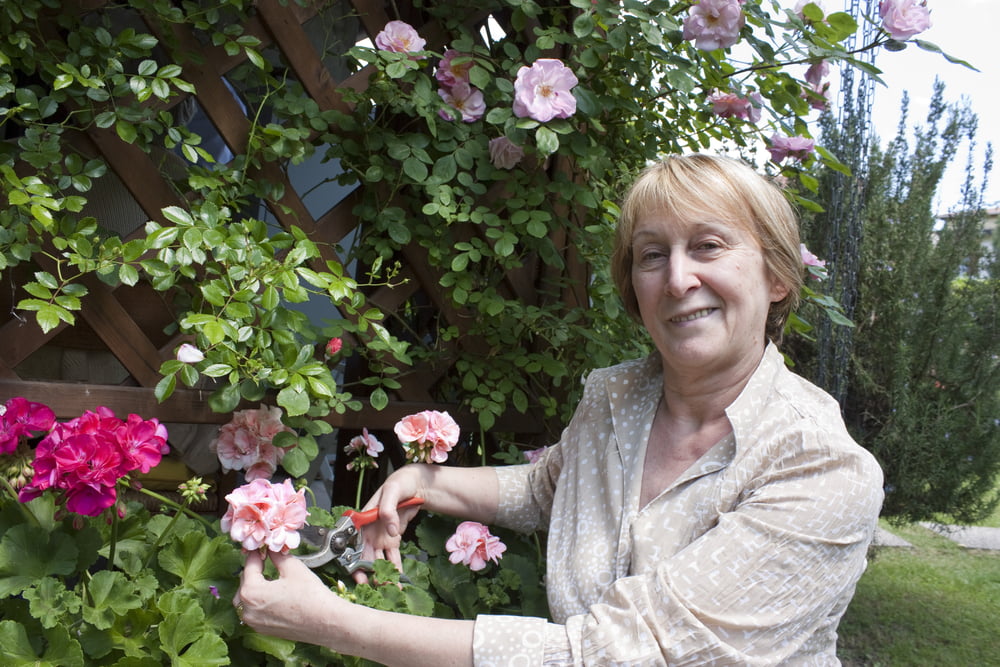In this blog for our #LifeAfterStroke series, Rose Peel looks at the role of occupational therapists in supporting stroke survivors and the need for evidence to underpin therapy.
Page checked 2 March 2023. The blog will be revised in April 2023, incorporating the National Clinical GuidelineA systematically developed statement for practitioners and participants about appropriate health care for specific clinical circumstances. for Stroke 2023, due to be published that month.
I am an occupational therapist working in stroke rehabilitation. I support stroke survivors with problems carrying out activities of daily living; this is the basis of our role.
Strokes can have a devastating effect on a person and their family. They are caused by a disruption of the blood supply to the brain. In the UK there around 100,000 strokes per year, that’s about one stroke every 5 minutes. It is the leading cause of disability in the UK (Stroke AssociationA relationship between two characteristics, such that as one changes, the other changes in a predictable way. For example, statistics demonstrate that there is an association between smoking and lung cancer. In a positive association, one quantity increases as the other one increases (as with smoking and lung cancer). In a negative association, an increase in one quantity corresponds to a decrease in the other. Association does not necessarily mean that one thing causes the other., 2017). The effects of stroke can be dramatic and change the way people are able to live their lives. A stroke can impact on all activities of daily living; your ability to get up out of bed, to dress, to make a drink, read a book, walk the dog, the list goes on and on. Our job as occupational therapists is to identify the areas of difficulty and work together to overcome, or work round these problems.
How soon can occupational therapists help someone after stroke?
Occupational therapists have a role to play throughout the stroke pathway. The National Clinical Guideline for Stroke (2016)* sets out clear guidance about when assessment should be initiated, the areas to consider, and the need for rehabilitation goals. An occupational therapist should complete their assessment within the first 72 hours of referral. It is often seen in clinical practice to be much earlier than this. Rehabilitation needs should be identified as early as possible. The occupational therapist works with the rest of the multidisciplinary to identify these and set treatment goals within the first five days.
An occupational therapist is well placed in the team to assess which activities of daily living a person is struggling with, such as feeding or dressing. They will assess the skills needed to perform these activities including cognition, vision, mood, physical functioning, and social participation, and will develop a treatment plan. Treatment usually involves practice of specific skills, or of activities of daily living. Often there’s also a need to look at adaptations to the activity, for example with aids or by simplifying the task. The occupational therapist will work alongside the person and offer education to them and their family. The occupational therapist may well refer to other members of the multidisciplinary team.

Working on what matters most: remembering Charlie
Thinking about a gentleman I worked with recently (I’ll call him Charlie), he had weakness in his right hand and arm, and he also experienced some loss of his visual field. Charlie’s main goals were to feed himself using a knife and fork, and to be able to walk on his own to the bathroom. Based on the assessment myself and the physiotherapists worked together to provide arm and hand exercises, and practiced the feeding in one to one sessions, we also organised a thick handled knife to aid his grip. Charlie was given some exercises to practice on his own, and their importance was explained to him.
To work on his second goal of independent walking, I referred Charlie to the orthoptist for further assessment of his vision, and we practiced scanning techniques to improve his use of intact vision and confidence to identify objects and obstacles. This work was done in conjunction with the physiotherapist and nursing staff so we were all supporting him to achieve his goals.
Charlie and his wife were very keen for him to return home, and the early supported discharge team helped to make this possible. The therapy he received on the stroke unit was handed over to the early supported discharge team therapists. Charlie continued to build on his achievements until he was back to doing the daily stroll to buy his morning paper, and making the lunchtime meal.
Evidence-based practice
The treatments available, and the staff who deliver these, may vary between stroke units. The authors of a Cochrane Review of interventions for improving arm function after stroke (published November 2014) found moderate quality evidence that a number of interventions probably offer benefits and could be used. These include constraint-induced movement therapy, mental practice, mirror therapy, interventions for sensory impairment, virtual reality and relatively high dose task practice. Occupational therapists and physiotherapists are usually able to access some of these interventions to improve arm function, but may not be able to access them all. It is important for treatments to be evidence-based wherever possible, and there are often developments and updates in stroke rehabilitation with the continually expanding body of research. In terms of intensity The National Clinical Guideline for Stroke (5th edition 2016) states the treatment time should accumulate to 45 minutes of each appropriate therapy every day. Depending on the stroke survivors’ needs, this could include occupational therapy, physiotherapy and speech therapy. It is recognised in the stroke sentinel national audit programme (Royal College of Physicians, Stroke Audit, 2017) that many units struggle to meet this standard.
From hospital to home
Following on from the acute phase some stroke survivors may remain in the hospital setting to continue their recovery, whilst others may be supported to return home. In many cases the occupational therapist will have an important role within the multidisciplinary team at this stage. They will consider the home and their support network in relation to the persons’ ability to engage in activities of daily living. They will work together with the rest of the team to ensure a safe discharge.
Commissioning of community stroke rehabilitation services does vary, and so access to therapy once home can differ between areas. The National Clinical Guideline for Stroke (5th Edition 2016) states there should be an early supported discharge team able to ease the transition home, and provide the intensity of rehabilitation received whilst on the stroke unit. It is acknowledged unfortunately in clinical practice a number of services fall short of this. This is highlighted in the guidelines particularly for those with more severe disability. The more dependent stroke survivors may need to be cared for in a 24-hour, care home setting. Occupational therapy for care home residents with stroke was the focus of another Cochrane Review in 2013. Only one small randomisedRandomization is the process of randomly dividing into groups the people taking part in a trial. One group (the intervention group) will be given the intervention being tested (for example a drug, surgery, or exercise) and compared with a group which does not receive the intervention (the control group). control trial was identified, and one ongoing trialClinical trials are research studies involving people who use healthcare services. They often compare a new or different treatment with the best treatment currently available. This is to test whether the new or different treatment is safe, effective and any better than what is currently used. No matter how promising a new treatment may appear during tests in a laboratory, it must go through clinical trials before its benefits and risks can really be known., so the evidence was insufficient to draw conclusions about the effectivenessThe ability of an intervention (for example a drug, surgery, or exercise) to produce a desired effect, such as reduce symptoms. of occupational therapy for this populationThe group of people being studied. Populations may be defined by any characteristics e.g. where they live, age group, certain diseases..
A Cochrane ReviewCochrane Reviews are systematic reviews. In systematic reviews we search for and summarize studies that answer a specific research question (e.g. is paracetamol effective and safe for treating back pain?). The studies are identified, assessed, and summarized by using a systematic and predefined approach. They inform recommendations for healthcare and research. of the research into occupational therapy for adults with problems completing activities of daily living after a stroke (published July 2017) included 9 studies with a total of 994 participants, but there were flaws in the methods used in the studies. For example, the interventions used by the occupational therapists were not specified, and from my own clinical experience I know these can vary quite a lot between therapists and between therapy teams. The quality of the evidenceThe certainty (or quality) of evidence is the extent to which we can be confident that what the research tells us about a particular treatment effect is likely to be accurate. Concerns about factors such as bias can reduce the certainty of the evidence. Evidence may be of high certainty; moderate certainty; low certainty or very-low certainty. Cochrane has adopted the GRADE approach (Grading of Recommendations Assessment, Development and Evaluation) for assessing certainty (or quality) of evidence. Find out more here: https://training.cochrane.org/grade-approach was assessed as low. The authors did conclude occupational therapy may improve performance in activities of daily living and reduce the likelihood of deterioration.
Looking ahead
The authors of this Cochrane Review identified the need for further primary research to determine carers’ or participants’ satisfaction with the services. They recommended further studies need to be larger and of better quality than those already conducted. However, it may be difficult to design studies that fully meet these requirements. This is because there are multiple factors that impact on therapy interventions. These include the individual impact of stroke on a person, their chosen activities of daily living, the clinical reasoning of the therapist, and the variety of rehabilitation tools available. It also needs to be considered that this is varied from one stroke team to another, this leads to an awful lot of variables.
As a stroke specialist occupational therapist, providing rehabilitation and support for adults with problems carrying out activities of daily living is the bread and butter of what we do. It is important we find a robust way to ensure we deliver quality therapy underpinned by evidence and we can justify our services in this austere climate.
*There will be a new edition of the National Clinical Guideline for Stroke in April 2023.
Join in the conversation on Twitter with @RosePeelOT @CochraneUK #LifeAfterStroke, or leave a comment on the blog.
Rose Peel has nothing to disclose.
References may be found here.



After my husband Stroke diagnosis in 2009 he’s right side was affected, arm was worse than his leg!. He was put on Thrombolytic therapy and after some time on therapy he didn’t feel any different, so we started on a Stroke Ataxia treatment protocol from Natural Herbs Centre the treatment effectively treated his Stroke condition.